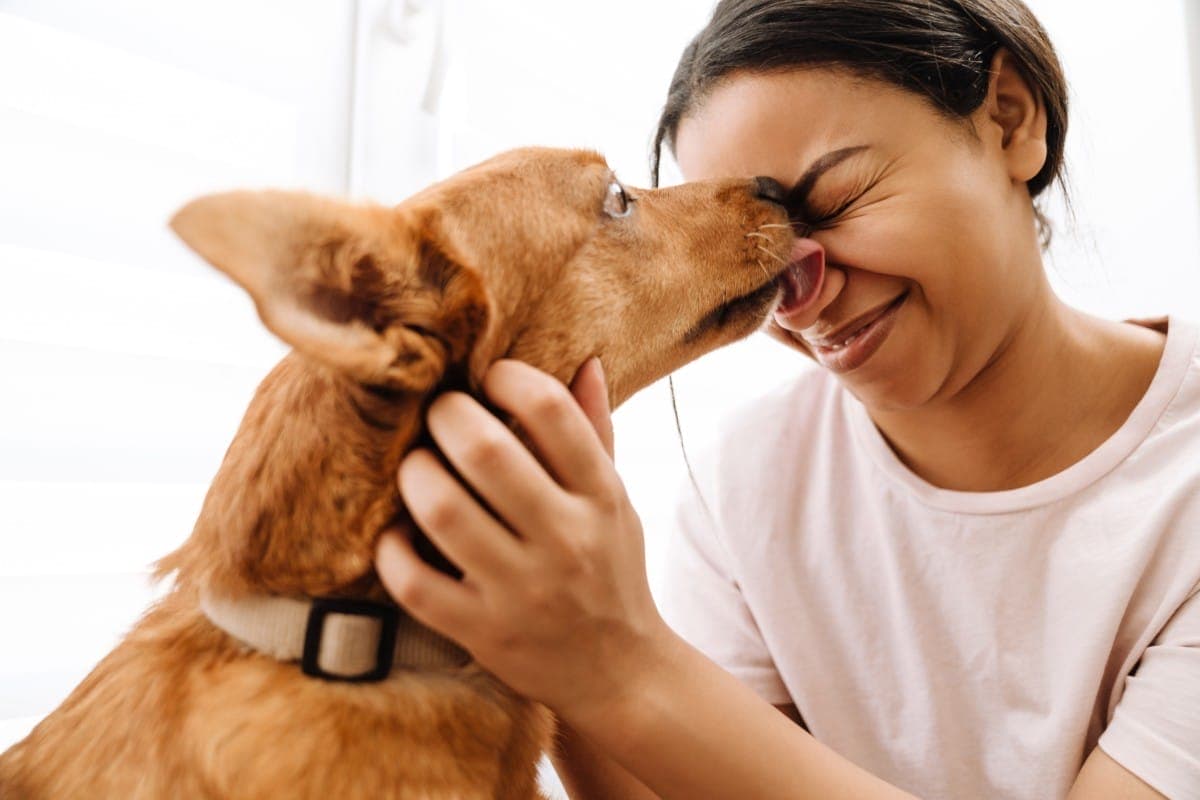Skincare
Potential Risks from a Beloved Habit: Dog Lick Kisses
If you click on links we provide, we may receive compensation.
Dogs are often referred to as man’s best friend, and their affectionate licks can feel like a warm greeting. However, letting your dog lick you might be more hazardous than you think. Recently, several alarming cases have brought to light the potential dangers of dog licks, including severe infections that can lead to life-threatening conditions and even limb amputation.
A tragic incident in Wisconsin highlighted this issue when a man named Greg Manteufel lost his limbs after contracting a severe infection from a dog lick. The bacteria responsible was Capnocytophaga canimorsus, which is commonly found in the mouths of dogs and cats. While it rarely causes problems, it can be deadly for some people, particularly those with compromised immune systems. Greg’s case is not an isolated one; similar stories have emerged, underscoring the serious risks associated with this seemingly innocent behavior.
While most people exposed to it do not get sick, the bacteria can cause severe infections in rare cases. According to the Centers for Disease Control and Prevention (CDC), about 74% of dogs and 57% of cats carry Capnocytophaga in their mouths.
Understanding the Bacteria Involved
Capnocytophaga canimorsus is a type of bacteria that lives in the mouths of healthy dogs and cats. While most people exposed to it do not get sick, the bacteria can cause severe infections in rare cases. According to the Centers for Disease Control and Prevention (CDC), about 74% of dogs and 57% of cats carry Capnocytophaga in their mouths. This bacterium can enter the human body through bites, scratches, or even licks if there is a break in the skin or mucous membranes. The infections can be rapid and severe, leading to sepsis, gangrene, and in extreme cases, amputations.
One study published in the Journal of Clinical Microbiology found that Capnocytophaga canimorsus was responsible for a significant number of severe infections following dog bites or scratches. In these cases, about 30% of patients required intensive care treatment, highlighting the severity of the infections that can arise from this bacterium.
Vulnerable Populations
Certain groups of people are more susceptible to infections from dog licks. Individuals with weakened immune systems, such as those with cancer, diabetes, or HIV, are at a higher risk. Additionally, people who have had their spleen removed or are on immunosuppressive medications are particularly vulnerable. In these individuals, even a minor exposure to the bacteria can lead to severe health consequences.
For example, an elderly woman in the United Kingdom had to undergo multiple surgeries, including partial limb amputation, after contracting an infection from her pet’s lick. Her compromised immune system made her especially susceptible to the bacteria, illustrating the heightened risk for specific populations.
Symptoms to Watch For
If you have been licked by a dog and are concerned about an infection, it is crucial to be aware of the symptoms. Infections from Capnocytophaga canimorsus can develop quickly, often within a few days. Early signs include fever, chills, fatigue, muscle pain, and headache. As the infection progresses, symptoms may include redness, swelling, blistering, and discharge at the site of the lick or wound. In severe cases, sepsis can develop, leading to shock, organ failure, and death if not treated promptly.
The CDC emphasizes the importance of seeking medical attention immediately if you develop any of these symptoms after being licked, bitten, or scratched by a dog. Early treatment with antibiotics can be lifesaving and may prevent the infection from becoming severe.
Real-life Cases and Statistics
Recent news stories have highlighted the devastating impact of infections caused by dog licks. In addition to Greg Manteufel’s case, there have been other reported instances of severe infections leading to amputations. For example, a man in Ohio lost his legs and hands due to an infection following a dog lick. These cases serve as stark reminders of the potential dangers and the need for awareness and caution.
According to the CDC, infections caused by Capnocytophaga canimorsus are rare but serious. Approximately 500,000 dog bites occur annually in the United States, and while most do not lead to severe infections, the risk is not negligible. The CDC provides detailed guidelines on preventing infections, including avoiding dog licks on broken skin or mucous membranes and seeking prompt medical attention if symptoms develop.





Prevention and Safety Measures
To minimize the risk of infection from dog licks, it is essential to practice good hygiene and take preventive measures. Washing your hands thoroughly with soap and water after handling pets is crucial. If you have an open wound, avoid letting your dog lick it and ensure it is properly covered to prevent bacteria from entering. Regular veterinary check-ups for your pet can also help reduce the risk, as veterinarians can identify and treat any potential issues that could contribute to bacterial infections.
Educating pet owners about the risks and encouraging them to practice good pet hygiene can significantly reduce the incidence of infections. Simple measures like keeping your dog’s teeth clean and avoiding direct contact with your face can make a big difference.
The Role of Healthcare Providers
Healthcare providers play a vital role in managing and preventing infections caused by dog licks. They can educate patients about the risks and provide guidance on proper wound care and hygiene. Additionally, healthcare providers should be vigilant in recognizing the signs of Capnocytophaga canimorsus infections, particularly in high-risk individuals. Prompt diagnosis and treatment are critical in preventing severe complications and improving outcomes.
It is also essential for healthcare providers to report cases of severe infections to public health authorities. This data can help track the incidence of infections and inform public health strategies to reduce the risk.
Educating the Public
Raising public awareness about the potential dangers of dog licks is crucial. Many people are unaware of the risks and may not take appropriate precautions. Public health campaigns and educational materials can help inform pet owners about the importance of good hygiene and the risks of allowing dogs to lick open wounds or mucous membranes.
Social media and online platforms can be powerful tools for disseminating information. By sharing stories of individuals who have suffered severe infections and providing practical advice on prevention, we can help protect others from similar experiences.
Conclusion
While the affectionate lick of a dog can be heartwarming, it is essential to be aware of the potential risks. Infections caused by Capnocytophaga canimorsus, though rare, can have devastating consequences, including sepsis, gangrene, and limb amputation. By understanding the bacteria involved, recognizing the symptoms of infection, and taking preventive measures, we can reduce the risk and ensure that our interactions with our furry friends remain safe and enjoyable.
Healthcare providers, public health authorities, and pet owners all have a role to play in preventing these infections and raising awareness about the potential dangers. By working together, we can protect ourselves and our loved ones from the hidden risks of dog licks.




